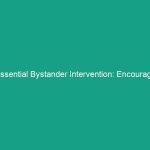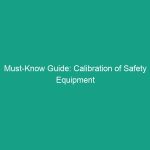Introduction
In today’s fast-paced work Environment, the importance of Health, Safety, and Environment (HSE) practices cannot be overstated. High-risk activities are inherent in various industries, including construction, manufacturing, and energy. These activities, if not managed properly, can lead to severe injuries, fatalities, and significant financial losses. Therefore, understanding and implementing Safe Work Practices for High-Risk Activities is crucial for protecting workers, minimizing risks, and ensuring compliance with Regulations. This article aims to explore essential safe work practices, regulatory frameworks, best practices, real-world case studies, challenges faced, and future trends in HSE.
Regulatory Frameworks
Regulatory frameworks serve as the backbone of Workplace Safety, providing guidelines and Standards that organizations must follow to ensure safe work practices. Compliance with these regulations is not just a legal obligation; it is a commitment to safeguarding employees and fostering a culture of Safety.
Understanding OSHA and Other Regulatory Bodies
The Occupational Safety and Health Administration (osha) is a key regulatory body in the United States, responsible for setting and enforcing standards to ensure safe working conditions. Organizations must familiarize themselves with OSHA standards relevant to their industry, such as construction Safety regulations, hazard communication standards, and machine guarding requirements. Other countries have their own regulatory bodies, such as the Health and Safety Executive (HSE) in the UK and Safe Work Australia, which offer similar guidelines and support.
Importance of Compliance
Compliance with HSE regulations has several Benefits, including:
- Risk Reduction: Adhering to safety standards helps identify and mitigate risks before they lead to accidents.
- Legal Protection: Following regulations protects organizations from legal liabilities and penalties.
- Enhanced Reputation: Companies known for prioritizing safety attract talent and customers, enhancing their market position.
Best Practices for Safe Work Practices
Implementing safe work practices requires a proactive approach, emphasizing Training, communication, and continuous improvement. Here are some Best Practices that organizations can adopt to ensure safety in high-risk activities.
Risk Assessment and Management
Conducting thorough risk assessments is fundamental to identifying potential Hazards associated with high-risk activities. Organizations should implement a systematic approach to risk management, including:
- Identifying Hazards: Utilize tools such as job safety analysis (JSA) to identify risks associated with specific tasks.
- Evaluating Risks: Assess the likelihood and severity of identified hazards to prioritize them effectively.
- Implementing Controls: Establish Control Measures, such as engineering controls, administrative controls, and Personal Protective Equipment (PPE), to mitigate risks.
Training and Awareness
Training is a critical component of safe work practices. Organizations should provide comprehensive training programs that cover:
- Safety Protocols: Educate employees on specific safety Procedures relevant to their roles and tasks.
- Emergency Response: Train employees on emergency procedures, including evacuation plans and first aid.
- Continuous Learning: Encourage ongoing education and refresher courses to keep safety knowledge up to date.
Effective Communication
Clear communication is vital for promoting a safe work environment. Organizations should establish channels for effective communication, including:
- Regular Safety Meetings: Conduct weekly or monthly safety meetings to discuss safety issues and updates.
- Visual Aids: Use signage, posters, and digital tools to reinforce safety messages and protocols in the workplace.
- Feedback Mechanism: Encourage employees to voice concerns and suggestions regarding safety practices.
Case Studies in Safe Work Practices
Real-world examples of successful implementation of safe work practices can provide valuable insights for organizations looking to enhance their safety protocols. Below are two case studies highlighting effective strategies.
Case Study 1: Construction Site Safety
A large construction firm faced significant safety challenges, including frequent accidents on-site. In response, they initiated a safety overhaul by implementing the following:
- Enhanced Training Programs: They introduced a comprehensive training program, including virtual reality simulations for high-risk tasks.
- Safety Audits: Regular safety audits were conducted to identify hazards and assess compliance with safety protocols.
- Incentive Programs: The company implemented an incentive program to reward teams for maintaining safety standards.
As a result, the firm saw a 40% reduction in workplace accidents over two years, showcasing the effectiveness of their new safety practices.
Case Study 2: Manufacturing Facility Improvements
A manufacturing facility experienced high injury rates related to machinery. They adopted the following strategies:
- Machine Safety Upgrades: They invested in advanced machine guarding systems and emergency stop buttons.
- Employee Engagement: Employees were involved in the decision-making process regarding safety improvements, fostering a sense of ownership.
- Data-Driven Decisions: The facility used incident data to identify trends and target specific areas for improvement.
These changes led to a significant decrease in injuries, highlighting the importance of tailored safe work practices for high-risk activities.
Challenges in Implementing Safe Work Practices
While the benefits of safe work practices are clear, organizations often face challenges in their implementation. Understanding these challenges can help organizations develop effective strategies to overcome them.
Resistance to Change
One of the most common challenges is resistance to change from employees. When new safety protocols are introduced, some workers may be hesitant to adopt them due to fear of increased workload or skepticism about their effectiveness. To combat this, organizations should:
- Involve Employees: Engage employees in the development of new safety practices to ensure their buy-in.
- Communicate Benefits: Clearly communicate the benefits of new practices, emphasizing how they protect employees and enhance overall safety.
- Provide Support: Offer support and resources to assist employees in adapting to new procedures.
Resource Limitations
Another challenge is limited resources, which can hinder the implementation of effective safety practices. Organizations should consider:
- Prioritizing Investments: Identify the most critical safety needs and allocate resources accordingly.
- Leveraging Technology: Utilize technology, such as safety management software, to streamline safety processes and maximize resources.
- Seeking Partnerships: Collaborate with external safety consultants or organizations to gain expertise and resources.
Future Trends in Safe Work Practices
As industries evolve, so do the approaches to safe work practices. Keeping abreast of future trends can help organizations stay proactive in their safety efforts.
Technological Advancements
The integration of technology into safety practices is on the rise. Innovations such as wearable technology, drones, and artificial intelligence are transforming how organizations approach safety. Wearables can monitor vital signs and alert workers of potential hazards in real-time, while AI can analyze data to predict and prevent accidents.
Focus on Mental Health
In recent years, there has been an increased emphasis on mental health in the workplace. Organizations are recognizing the impact of mental well-being on overall safety and productivity. Initiatives such as stress management programs, mental health days, and accessible counseling services are becoming integral to comprehensive Safety Strategies.
Emphasis on Sustainability
Sustainable practices are gaining traction in HSE discussions. Organizations are not only focusing on physical safety but also on environmental impacts and sustainable practices. Incorporating sustainability into safety practices can enhance the overall safety culture while also benefiting the environment.
Conclusion
Implementing Safe Work Practices for High-Risk Activities is essential for creating a safe and productive work environment. By understanding regulatory frameworks, adopting Best Practices, learning from case studies, addressing challenges, and staying informed about future trends, organizations can significantly reduce risks associated with high-risk activities. The commitment to HSE is not just a regulatory requirement; it is a crucial investment in the well-being of employees and the overall success of the organization. We encourage all organizations to prioritize safety and continuously seek improvement in their practices. Together, we can create safer workplaces for everyone.


